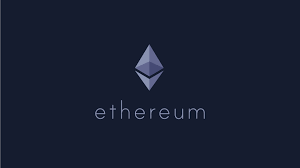Ethereum, the second-largest cryptocurrency by market capitalization, has been a major force in the evolution of the blockchain industry. Since its inception, Ethereum has revolutionized the world of smart contracts, decentralized applications (dApps), decentralized finance (DeFi), and non-fungible tokens (NFTs). As Ethereum continues to evolve, its innovations promise to reshape the future of digital assets, financial systems, and digital ownership. In this article, we explore Ethereum’s journey, key milestones, challenges, and what lies ahead for the network.
1. Introduction to Ethereum: A Brief Overview
What is Ethereum?
Launched in 2015 by Vitalik Buterin, Ethereum is more than just a digital currency. While it shares similarities with Bitcoin, Ethereum allows for the creation of smart contracts and decentralized applications (dApps), enabling a wide range of blockchain-based functionalities beyond simple financial transactions.
Ethereum’s blockchain is designed to be programmable, empowering developers to build decentralized systems that operate without intermediaries. This has made Ethereum the go-to platform for innovators in the cryptocurrency and blockchain space.
Ethereum’s Role in the Crypto Ecosystem
As the second-largest cryptocurrency by market cap, Ethereum plays a critical role in the broader cryptocurrency ecosystem. It is the backbone of key sectors like Decentralized Finance (DeFi) and Non-Fungible Tokens (NFTs). With its robust smart contract capabilities, Ethereum enables the development of decentralized applications that power financial products, digital art markets, and more.
2. The Rise of Ethereum: Key Milestones and Achievements
Ethereum’s Launch and ICO Boom
In July 2015, Ethereum’s network went live, marking the beginning of its journey. Its Initial Coin Offering (ICO) helped raise funds, enabling Ethereum to expand rapidly. The ICO boom of 2017 saw Ethereum’s native token, Ether (ETH), skyrocket in value as new projects launched their own tokens on the Ethereum blockchain.
Enterprise Adoption and Partnerships
Ethereum’s popularity extends beyond retail investors. Major corporations like Microsoft, JP Morgan, and Coca-Cola have leveraged Ethereum’s blockchain for enterprise solutions. These partnerships have helped solidify Ethereum’s reputation as the leading blockchain platform for business applications and enterprise adoption.
3. Challenges and Scalability Issues Faced by Ethereum
Network Congestion and High Gas Fees
As Ethereum’s popularity grew, so did the demand for its network. Network congestion and high gas fees became significant obstacles, especially during periods of high trading volume. This made transactions slow and expensive for users, highlighting the need for better scalability solutions.
Scalability Challenges with Proof of Work (PoW)
Ethereum’s original Proof of Work (PoW) consensus mechanism, while secure, was not scalable enough to handle the increased demand. As a result, Ethereum developers began exploring solutions to address scalability and energy inefficiency.
4. Ethereum 2.0: The Beacon Chain and Proof of Stake Transition
Overview of Ethereum 2.0 Upgrade
Ethereum 2.0 represents a significant upgrade to the Ethereum network, focused on improving scalability, security, and energy efficiency. The shift from Proof of Work (PoW) to Proof of Stake (PoS) began with the introduction of the Beacon Chain in December 2020. This upgrade lays the foundation for a more sustainable Ethereum blockchain, reducing the energy consumption associated with mining and allowing the network to process more transactions efficiently.
Benefits of Proof of Stake (PoS)
Proof of Stake (PoS) will allow Ethereum to scale while reducing its environmental footprint. Instead of miners competing to validate transactions through energy-intensive computations, validators on Ethereum 2.0 will stake their ETH to participate in the consensus process. This transition is expected to make Ethereum more sustainable and cost-effective.
5. Ethereum’s Impact on DeFi and NFTs: A New Era of Digital Assets
Ethereum and the Decentralized Finance (DeFi) Revolution
Ethereum is the heart of the DeFi ecosystem, where users can access financial services without relying on traditional banks. Through smart contracts, Ethereum powers a wide range of DeFi platforms, including lending, borrowing, staking, and yield farming, making decentralized finance accessible to anyone with an internet connection.
NFTs and Ethereum’s Role in Digital Art
Non-fungible tokens (NFTs) have become a major trend in digital art, and Ethereum plays a central role in their creation and exchange. The Ethereum blockchain provides a secure and transparent platform for artists, creators, and collectors to mint, buy, and sell NFTs, creating a decentralized marketplace for digital ownership.
6. The Future of Ethereum: Upcoming Upgrades and Developments
Ethereum Improvement Proposal 1559 (EIP-1559)
One of Ethereum’s most significant recent upgrades was EIP-1559, which introduced a new transaction fee model aimed at reducing transaction costs and making fees more predictable. This upgrade introduced a deflationary mechanism, where a portion of the transaction fees is burned, reducing the overall supply of ETH over time.
Layer 2 Scaling Solutions for Ethereum
To further enhance scalability, Layer 2 solutions like Optimistic Rollups and zkRollups are being developed to help Ethereum process transactions off-chain, reducing congestion and lowering fees. These solutions are expected to significantly increase Ethereum’s transaction throughput, making it more user-friendly and competitive.
7. Ethereum vs. Competitors: Positioning in the Crypto Market
Comparison with Other Smart Contract Platforms
While Ethereum is the leader in the smart contract space, it faces strong competition from other blockchain platforms like Binance Smart Chain, Solana, and Polkadot. These platforms offer faster transactions and lower fees, but Ethereum maintains its lead due to its mature ecosystem, first-mover advantage, and ongoing network upgrades.
Ethereum’s Market Share and Competitive Landscape
Despite competition, Ethereum holds a dominant position in the DeFi and NFT sectors. However, it must continue to innovate to stay ahead of its competitors and maintain its market share in the ever-evolving crypto landscape.
8. Conclusion: The Future Impact of Ethereum’s Evolution
The Growing Impact of Ethereum on the Crypto Industry
As Ethereum continues to evolve, its influence on the blockchain industry and the broader financial sector is set to grow. From its role in DeFi to its impact on digital art and NFTs, Ethereum is helping to shape a more decentralized and inclusive financial system.
Ethereum’s Potential Challenges and Opportunities
While Ethereum’s future looks promising, it faces challenges such as scalability, competition from other blockchains, and regulatory scrutiny. However, ongoing upgrades like Ethereum 2.0, EIP-1559, and Layer 2 solutions are paving the way for a more efficient and scalable Ethereum network, ensuring that it remains a major player in the blockchain space.
FAQ: Ethereum in the Crypto Ecosystem
- What Makes Ethereum Different from Bitcoin? Ethereum differentiates itself by offering a programmable blockchain that supports smart contracts and decentralized applications (dApps), making it a versatile platform for decentralized finance and other use cases beyond digital money.
- How is Ethereum Addressing Its Scalability Issues? Ethereum is transitioning to Ethereum 2.0, which introduces Proof of Stake and various Layer 2 scaling solutions like zkRollups and Optimistic Rollups, significantly improving transaction speed and cost-efficiency.
- What Role Does Ethereum Play in DeFi and NFTs? Ethereum is the foundation for most DeFi platforms and NFT marketplaces, offering secure, decentralized smart contracts that enable financial transactions and digital asset ownership without intermediaries.








No Comments